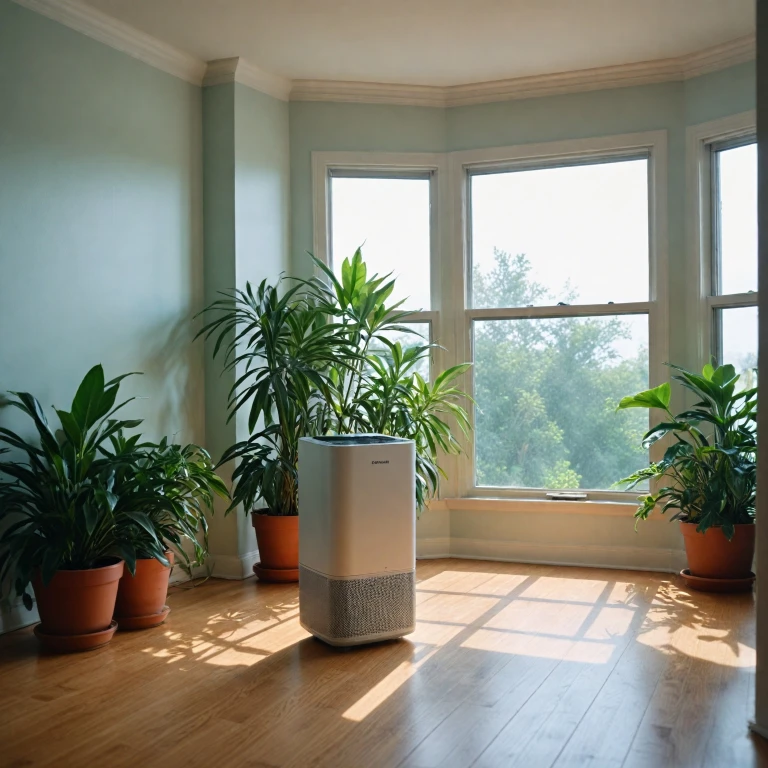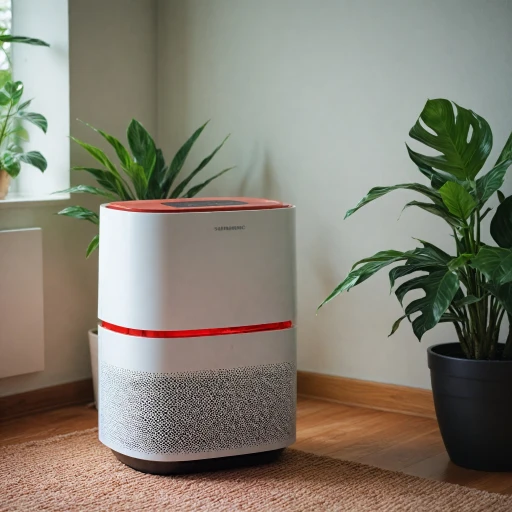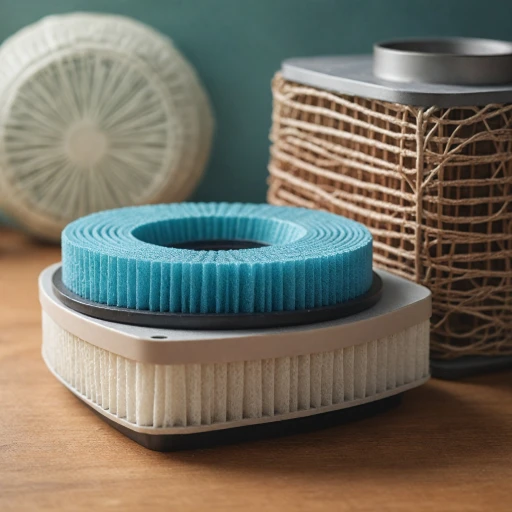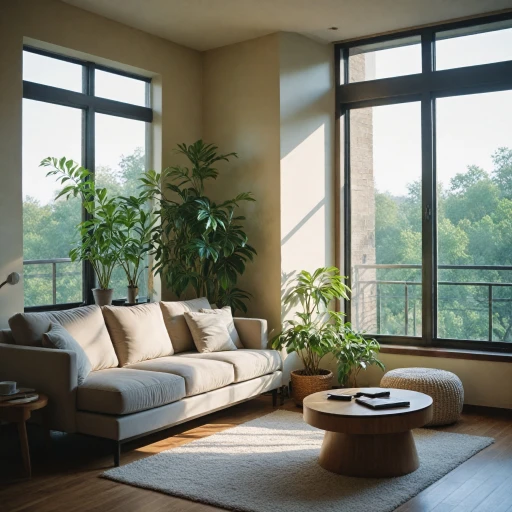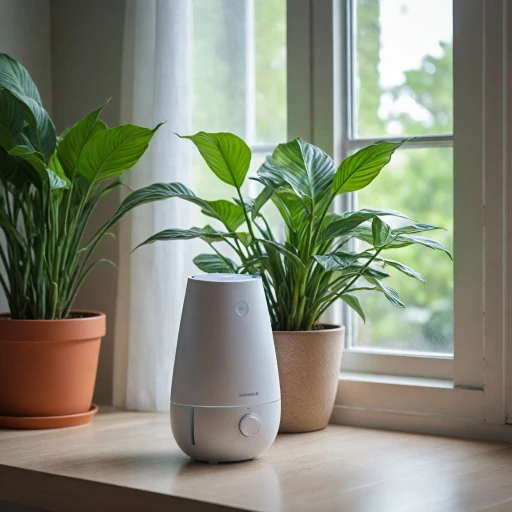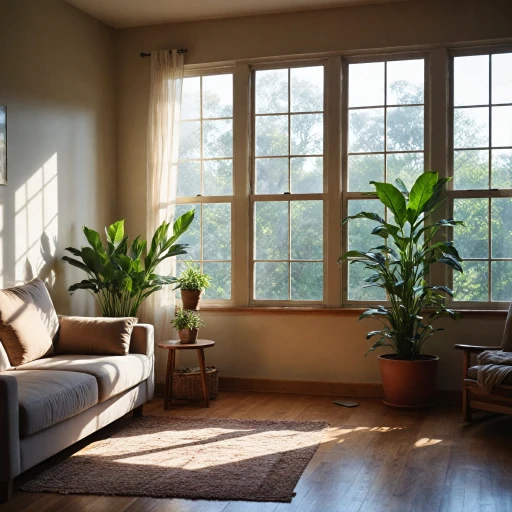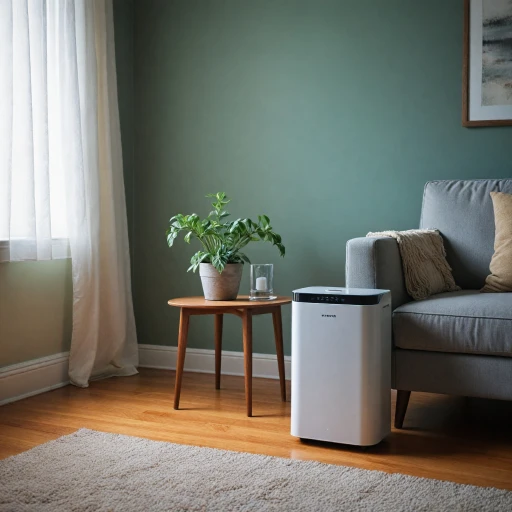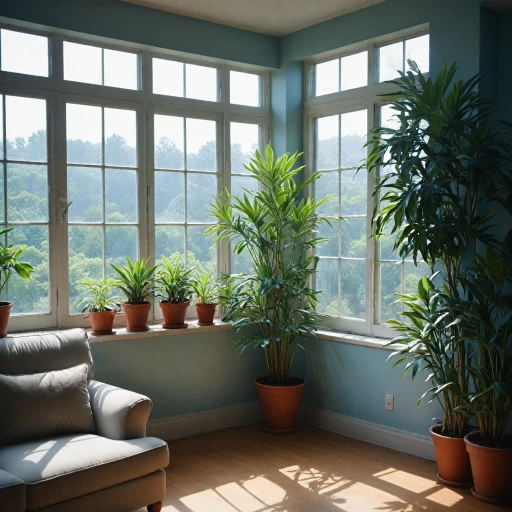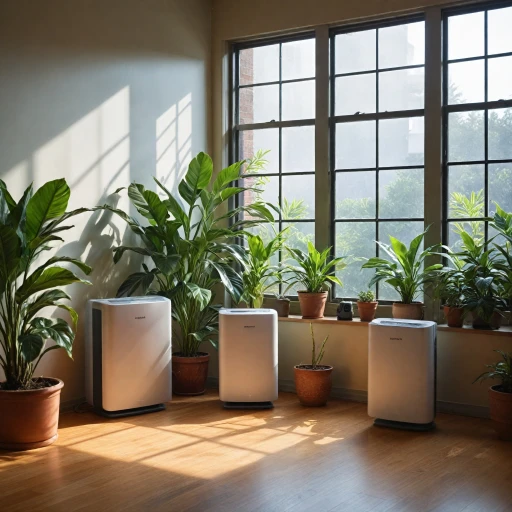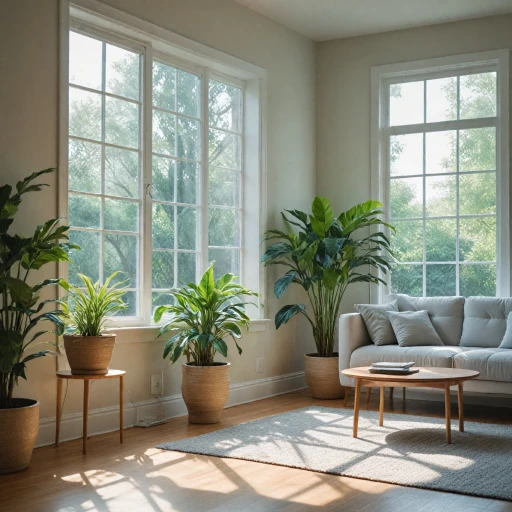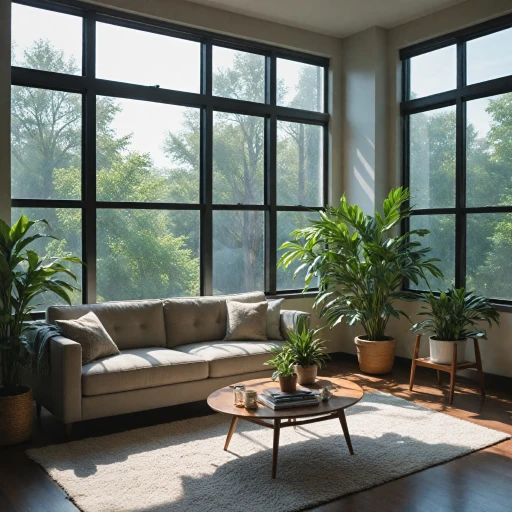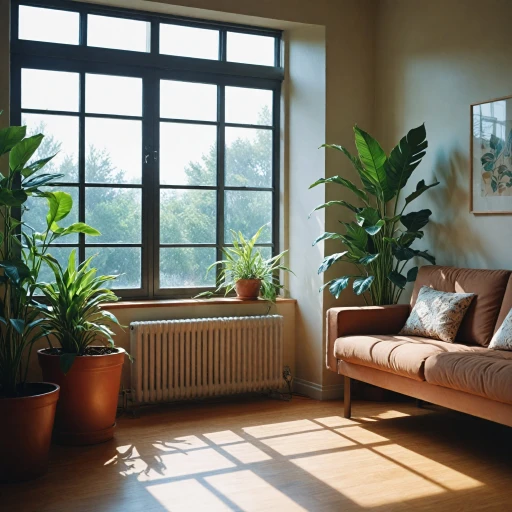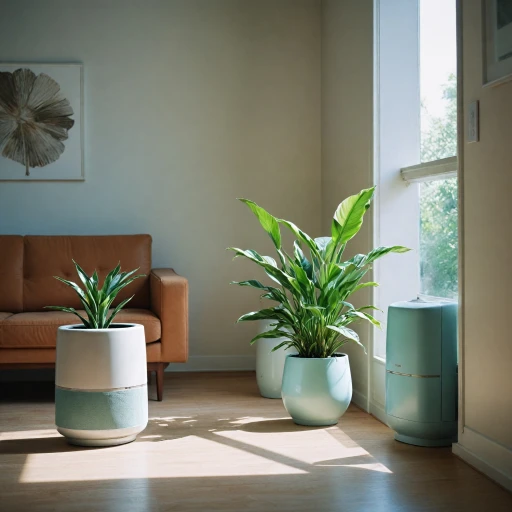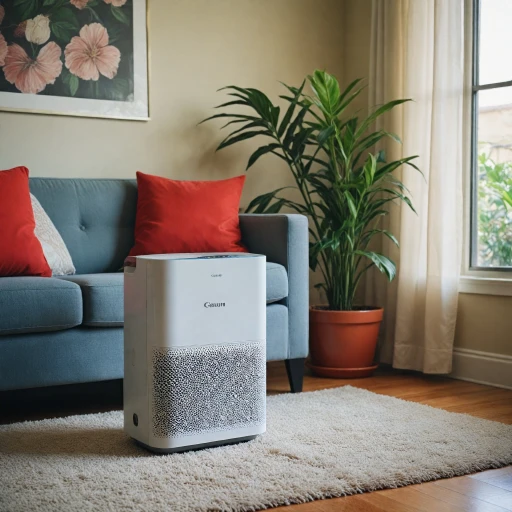
How Air Purifiers Work
Uncovering the Mechanism Behind Air Purifiers
Air purifiers are central to maintaining excellent indoor air quality by removing pollutants and allergens from the air. These products often feature multiple stage filtration systems which work to capture a variety of contaminants. Let's dive deeper into how they effectively cleanse your environment. Many air purifiers incorporate a pre filter designed to catch larger particles such as dust and pet dander, therefore prolonging the lifespan of the main filters. Following the pre-filter stage, a crucial component, the HEPA filter, comes into play. HEPA stands for High-Efficiency Particulate Air, a standard that ensures fine particles are effectively trapped. True HEPA filters can capture up to 99.97% of particles that are only 0.3 microns or larger. Incorporating different filtration technologies, purificadores de aire can include additional layers such as carbon filters for neutralizing odors, or UV light to address bacteria. These additional layers enhance the product's efficiency, which is particularly beneficial if you are sensitive to pollutants. Some certified products are independently verified to ensure they meet global quality standards, ensuring customers receive a reliable air purification system. Smaller rooms might require a distinctive air cleaner compared to a large room. The selection of the right air purifier often comes down to factors such as room size, filter replacement costs, and specific air concerns, which we'll explore further under factors to consider when purchasing. For those who plan to share their space with a purrificadores aire, ease of maintenance, availability of replacement filters, and function modes like sleep mode, are noteworthy features to consider. Understanding how these devices operate is essential in recognizing their health benefits, especially in social environmental settings. If you want to learn more about enhancing indoor air quality with advanced commercial systems, check out this informative guide.Health Benefits of Using an Air Purifier
Enhancing Well-being: A Breath of Fresh Air
Using an air purifier can significantly enhance the quality of life by ensuring cleaner air within your home or office. Here's how it contributes to improved health:
- Reduction of Allergens: Air purifiers equipped with HEPA filters are critical in capturing tiny particles like pet dander, dust mites, and pollen, which are common triggers for allergies and asthma.
- Elimination of Harmful Pollutants: These devices effectively remove pollutants that can lead to long-term health issues. Be it volatile organic compounds (VOCs) from household products or emissions from your local environment, a sturdy air purifier can mitigate their impact significantly.
- Control of Respiratory Issues: When using a purificador aire in small or large rooms, the air quality enhancement directly supports better respiratory health by cleaning the air you breathe and reducing the incidence of respiratory discomfort.
- Promoting Restful Sleep: A certified product like a purifier with a sleep mode can lessen airborne irritants that might interfere with a good night's rest, contributing to overall well-being and daily performance.
For individuals with sensitive health conditions, it's often recommended to choose air purifiers with multiple stage filtration systems—these include pre-filters, HEPA filters, and activated carbon filters to enhance the filtering capabilities. While purchasing, consider products that are independently verified to meet global standards, ensuring you invest in quality and efficiency.
Different Types of Air Purifiers
Exploring the Continuum of Air Purification Technologies
When embarking on the journey of purchasing an air purifier, it's imperative to understand the spectrum of options available. Each type of air purifier has distinct mechanisms and target functions, catering to diverse needs and settings. Firstly, the widely popular True HEPA air purifiers have gained recognition for their ability to capture up to 99.97% of particles as small as 0.3 microns, including dust, pollen, and pet dander. These units often comprise multiple stage filtration systems, including pre-filters for capturing larger particles, making them ideal for maintaining air quality in small to large rooms. Next on the list are Activated Carbon filters, which are primarily used for absorbing odors, gases, and volatile organic compounds (VOCs). Although these purifiers might not eliminate particles, they play a significant role in enhancing indoor air freshness. For those dealing with specific odors, integrating these filters into your purchase can be beneficial. Additionally, UV-C air purifiers use ultraviolet light to eliminate bacteria and viruses, aiming to improve air purity through sterilization. However, choosing such a purifier requires careful consideration of the space size and potential exposure to UV emissions. Moving beyond common models, Ionic purifiers work differently by releasing charged ions that attract and neutralize airborne pollutants. While these products can effectively target smaller impurities, they may produce ozone as a byproduct, which is an important factor to consider. Finally, for those interested in environmentally conscious options, social environmental air cleaners offer solutions that align with global standards. Look for independently verified products to ensure quality and effectiveness. For optimal efficiency, many purificadores aire feature sleep modes for silent operation during nighttime use, catering to continuous air cleaning without disturbing rest. Understanding these varied purificador aire technologies provides a comprehensive foundation for selecting the right model based on specific needs, room sizes, and budget considerations—a crucial step before delving into the common misconceptions surrounding these devices. For tips on strategic placement of air purifiers for improved efficiency, consider choosing the optimal spot for your air purifier.Factors to Consider When Choosing an Air Purifier
Key Considerations When Selecting Your Air Purifier
Determining the right air purifier is crucial for achieving optimal indoor air quality. Here are essential factors to weigh when making your purchase decision:
- Type of Air Purifier: Different purifiers address varying needs. For instance, true HEPA purifiers are highly effective in capturing tiny particles like pet dander and fine dust, while purificadores aire with activated carbon filters excel in neutralizing odors.
- Room Size: It's vital to match the purifier's capacity to the room size. Small rooms can effectively use compact air purifiers, while larger spaces may require purifiers designed for a large room.
- Filtration Stages: A stage filtration system enhances the purifier's efficiency. Commonly, products with a multi-stage setup include a pre-filter for larger particles, a HEPA filter for finer contaminants, and additional layers targeting specific pollutants.
- Certification and Standards: Opt for certified products to ensure quality and efficiency. Look for purifiers that are independently verified and meet global standards for air cleaning performance.
- Noise Level: Features like a sleep mode can be beneficial for maintaining quiet during nighttime, ensuring restful sleep without compromising air cleaning.
- Maintenance Requirements: Consider the frequency and cost of replacement filters. True HEPA filters may require regular changing to sustain air quality.
- Price and Seller Reputation: Analyze the price-to-value ratio and select a seller with established credibility to guarantee a satisfied purchase and product durability.
- Additional Features: Some purifiers offer advanced functions, such as aire para sensors or social environmental monitoring, which can enhance user convenience.
Understanding these factors is essential in choosing the right air purifier tailored to your specific needs, ensuring a healthier living space.
Common Misconceptions About Air Purifiers
Debunking Myths About Air Purifiers
Air purifiers have become a staple in many households, but misconceptions about their functionality and benefits persist. Understanding these myths can help you make a more informed purchase decision.
Myth 1: All Air Purifiers Are the Same
Not all air purifiers are created equal. While many products claim to improve air quality, only those with true HEPA filters are certified to capture 99.97% of particles as small as 0.3 microns. It's crucial to look for independently verified and certified products to ensure you're getting a quality air cleaner.
Myth 2: Air Purifiers Eliminate All Indoor Air Pollutants
While air purifiers are effective at reducing airborne particles like pet dander and dust, they cannot remove all indoor air pollutants. For comprehensive air quality improvement, consider a multi-stage filtration system that includes a pre-filter and activated carbon filter. This setup can tackle a broader range of pollutants.
Myth 3: Air Purifiers Are Only Necessary for Large Rooms
Some believe air purifiers are only needed in large rooms, but even small spaces can benefit from improved air quality. Compact purificadores aire are designed for smaller rooms and can be just as effective in enhancing indoor air.
Myth 4: Higher Price Equals Better Quality
Price is not always an indicator of quality. While some high-end models offer advanced features like sleep mode and smart technology, there are affordable options that provide excellent filtration. Always check for certified products and read reviews from reputable sellers before making a purchase.
Myth 5: Air Purifiers Require Constant Filter Replacement
While it's true that filters need to be replaced periodically, the frequency depends on the type of purifier and the environment. HEPA filters, for example, typically last longer than other types. Regular maintenance and timely replacement filters can ensure your purifier operates efficiently.
By understanding these common misconceptions, you can better evaluate the air purifiers available on the market and choose one that meets your specific needs. Remember, the right air purifier can significantly enhance your indoor air quality, contributing to a healthier living environment.
Tips for Maximizing Air Purifier Efficiency
Making the Most of Your Air Purifier
To fully benefit from your air purifier, it's essential to understand how to maximize its efficiency. By following these tips, you can improve the air quality in your home and ensure that your investment in an air cleaner is well worth it.- Choose the Right Product for Your Space: Whether your aire para is meant for a small room or a large room, selecting the appropriate product is key. Air purifiers come in different sizes and capacities, tailored to specific room dimensions.
- Utilize Multi-Stage Filtration: Many air purifiers offer stage filtration, including HEPA filters, pre filters, and carbon filters which are designed to target different pollutants. Understanding your home’s needs will help in choosing a model with the right type of filters.
- Regular Maintenance and Replacement Filters: Keep track of your purifier's maintenance schedule. Replacement filters, especially for HEPA air purifiers, are crucial to maintaining the unit's performance. Neglecting this can lead to decreased efficiency and air quality.
- Place Your Purifier Strategically: Placement is crucial for optimal performance. Always refer to the manufacturer's recommendations, as some purificadores aire work better on the floor, while others may work effectively if placed on a shelf or table.
- Certified Products: Purchase certified air purifiers and products that have been independently verified to meet global air quality standards. This ensures you’re getting a product that performs reliably and efficiently.
- Monitor Air Quality: Keeping an eye on indoor air can help you determine if your air purifier is performing as expected. Some models come with built-in air sensors that adjust the operation in response to the aire para quality.
- Activate Sleep Mode for Calm Evenings: If noise is a concern, especially in bedroom areas, use the sleep mode feature to keep your space quiet and peaceful while still benefiting from the device’s filtration capability.
